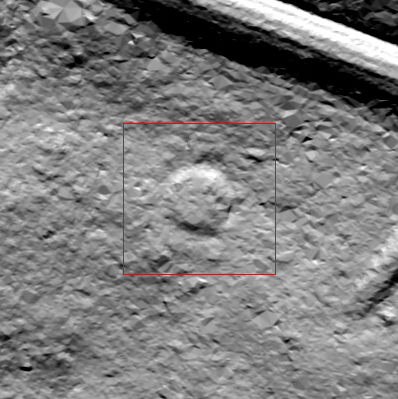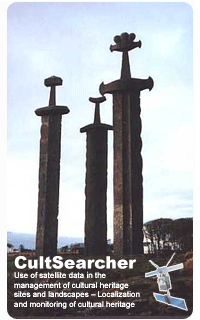Charcoal kilns at Lesja are detected in airborne laser data using deep learning
Charcoal kilns at Lesja are detected in airborne laser data using deep learning

 NR Researchers Arnt-Børre Salberg and Øivind Due Trier are now using deep learning for semi-automatic detection of charcoal kilns from airborne laser scanning (ALS) data. Preliminary results indicate that this is very effective compared to traditional pattern recognition methods.
NR Researchers Arnt-Børre Salberg and Øivind Due Trier are now using deep learning for semi-automatic detection of charcoal kilns from airborne laser scanning (ALS) data. Preliminary results indicate that this is very effective compared to traditional pattern recognition methods.
With deep learning, 85% of the kilns are detected, with only 10% false positives in addition. With traditional pattern recognition on similar problems, the correct classification rate was lower, and the number of false positives was orders of magnitude higher.
Charcoal kilns were used by ironworks a few hundred years ago. E.g., in Lesja municipality, Oppland County, Norway, there was an ironwork from 1660-1812. For the purpose of historical documentation, archaeologists are interested in mapping the exact location and size of each charcoal kiln. It is difficult to hand-craft an automatic detection method that may locate charcoal kilns. However, a number of image detection problems have been solved recently by the use of deep learing.
In 2012 an image recognition system based on deep convolutional neural network (CNN) won the ImageNet contest with a clear margin to competing algorithms. This sparked a revolution in computer vision, and today we have witnessed that deep learning-based systems have drastically surpassed previous state-of-the-art results in image classification accuracy. In order to train a CNN with high performance, a substantial amount of labelled training images is needed. For many applications this is not feasible. However, a “small data approach” exists. It has been successfully demonstrated that the features extracted from a deep CNN, carefully trained on the large ImageNet database, may be applied as generic feature representations and thereby applied to perform a wide variety of vision tasks.
We have applied this “small data approach” approach to extract image features from a digital terrain model derived from the ALS data. From each image crop the deep network outputs 4096 image features, which are applied as input to a linear support vector machine that is trained to distinguish charcoal kilns from lookalikes.
In the initial experiment, deep learning is used within a 3 × 3 km² area at Sandom in Lesja municipality, containing 375 charcoal kilns. Crossvalidation gives 85% correct classification. In addition, only 10% false positives are obtained. This is dramatically better than the results we have previously obtained using traditional pattern recognition for the detection of grave mounds and charcoal kilns.
Read more about the project CultSearcher.




 How to get to NR
How to get to NR Share on social media
Share on social media Privacy policy
Privacy policy